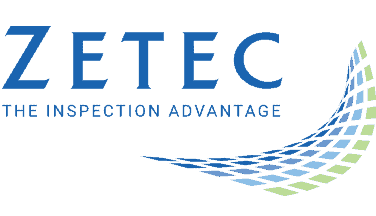Utilizing NDT Railway Track Inspection Technology for Improved Flaw Detection

The most common flaws found on railway tracks include wear, discontinuities, and corrosion. Various nondestructive testing (NDT) techniques can detect cracks and other flaws, but when it comes to railway track inspection technology, the best methods to use include phased array ultrasonic testing (PAUT) and eddy current array (ECA).
Simply utilizing these methods, however, is not enough. It is important to equip analysts with high-quality instrumentation and software to ensure thorough and accurate inspections. Portable ultrasonic and eddy current testing devices equipped with advanced features and capabilities along with cutting-edge software can analyze defects and outline a full profile of irregularities more efficiently than standard instrumentation. The better tools your analysts have, the more effectively they will be able to detect seemingly minor flaws that could foster critical safety hazards in the future.
PAUT Strategies
In terms of railway track inspection technology, ultrasonic testing remains the most widely used nondestructive testing method. To get the best results, NDT analysts must first use a walking stick or an inspection car. From there, the analysts employ a portable PAUT device if the walking stick or inspection car reads strange anomalies.
Eddy current testing can be used to detect flaws on a surface and near-surface level, but NDT analysts should choose ultrasonic phased array to inspect on a volumetric level. A PAUT instrument should have the capability to penetrate through thick components, such as railway tracks. The PAUT instrument allows customization procedures on problematic areas picked up by the walking stick or inspection car.
Example: During a routine railway track inspection, an NDT analyst assesses a track section after a walking stick detected strange readings. Using a portable UT instrument, the analyst applies the total focusing method (TFM) to pinpoint a crack on the surface level. TFM not only picks up the damage, but identifies the size of the crack in the highest possible resolution.
A PAUT instrument possesses superior depth focusing capabilities, with the power to customize beam shapes for complicated surfaces. It also allows inspectors to steer the beam for comprehensive coverage and optimize focus parameters based on the testing scenario.
For railway welds, PAUT allows analysts to commence more than one angle using one probe, with no need to switch wedges or probes. By using one probe, the user can concentrate on picking up more defects without frequently changing probes and wedges.
PAUT instruments should also be equipped with state-of-the-art software that streamlines online and offline data analysis. To maximize data quality, NDT analysts need software that streamlines data collection and can render a full-scale 3D map to achieve a wider context.
That same software supports corrosion scanning devices that can expose corrosion on a surface and subsurface level. Corrosion scanning devices can also conform to the shape and curvature of an object being tested and adapt to flat and irregular surface patterns of rail tracks, covering a tested area fully without missing vital areas. These scans provide a full map of the testing radius, including an expanded profile of the corrosion depth.
ECA Strategies
Eddy current testing offers a similar level of detailed analysis of surface-level defects and near-surface defects. The best ECT probes can adapt to the shape of the railing head and should read surface cracking regardless of the surface shape. One of the best features of an eddy current array instrument is the ability to detect more anomalies with a single pass of the probe.
Additionally, ECA is dynamic to the point of reducing inspection times by up to 95 percent when compared with traditional handheld probes. Ideally, the instrument should be equipped with a cutting-edge signal-to-noise ratio (SNR) that advances the detection probabilities exponentially; an excellent SNR will bolster the scanning speed without missing design weaknesses.
Example: An inspection car detected cracking in the head of the railing. Using a surface array probe, the analyst scans more of the area with a single scan. They found several longitudinal and transverse cracks that were incredibly minute in scale. The analyst detected cracks as small as 0.020 inches, including subsurface flaws that alternative NDT methods would fail to detect.
Unlike liquid penetrant testing or magnetic particle testing, surface array testing does not require extensive setup times or harmful chemical use. A surface array probe can detect off-axis, longitudinal, and transverse cracks in less time and without the hassle. Inspectors can also procure a surface array encoder for a more meticulous definition of the damage and a more accurate position of the defects.
Faster railway track inspections are only possible through powerful software that supports ECA instrumentation and ECA probing. The profound analytic and filtering prowess allows NDT analysts to concentrate on probing as opposed to sifting through extensive data online and offline. The interface of the software is also simple to use and does not require considerable training time. ECA functionality is another vehicle that saves time while finding more flaws, helping managers and owners craft comprehensive maintenance budgets that ensure public safety and operational efficiency.
The Benefits of Quality Railway Track Inspection Technology
Ultrasonic testing is the most commonly accepted method when finding surface and subsurface occurrences. Eddy current testing is a great choice for probing surface-based defects, but the right form of ECA instrumentation and probing can also scan subsurface defects. Especially when paired with cutting-edge software, eddy current array and phased array ultrasound are the most efficient inspection NDT methods available for assessing railway tracks for corrosion, cracking, and other potentially fatal flaws.
Investing in top-of-the-line equipment for NDT analysts isn’t just about improving inspection times or even streamlining maintenance budgets. Providing analysts with their best chance of detecting critical rail flaws as early as possible is key to catastrophe prevention and ensuring a safe journey on the railway for all.
Zetec is a leading name in both eddy current and ultrasonic testing technologies. To learn more about how our NDT instrumentation and software can help your analysts improve inspection efficiency and flaw detection, contact us today.





